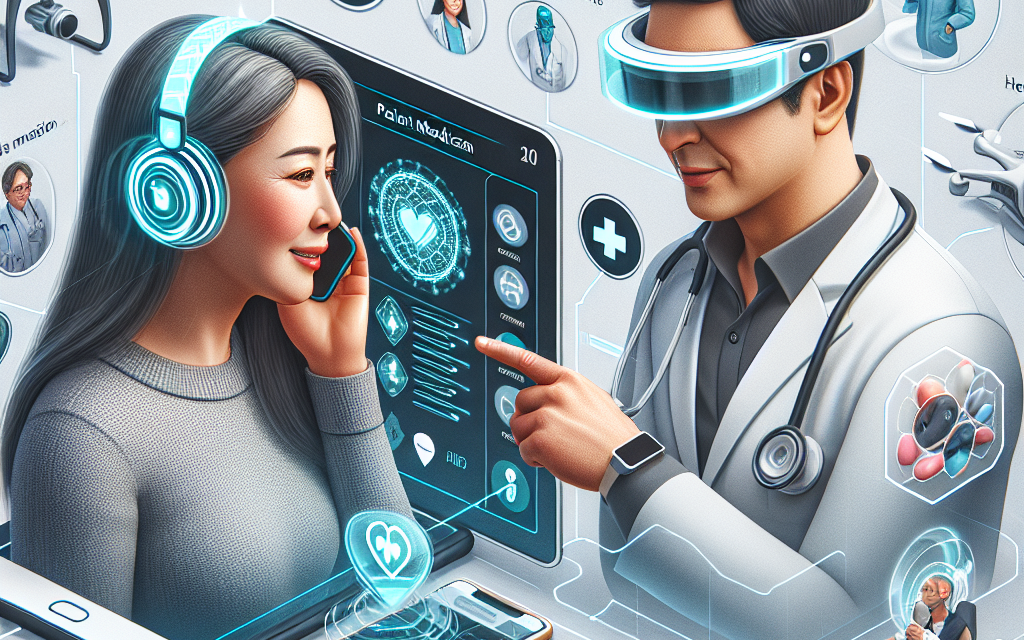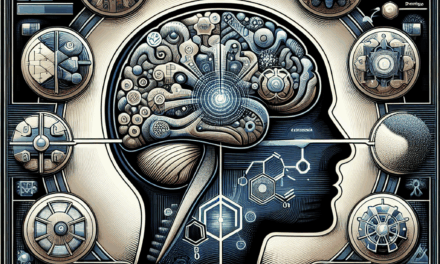How Technology is Revolutionizing Communication with Your Doctor

In the rapidly evolving landscape of healthcare, technology is playing a pivotal role in transforming how patients interact with their healthcare providers. From telemedicine to electronic health records, the integration of technology into healthcare systems is enhancing the quality of care, improving patient outcomes, and making healthcare more accessible. This article explores how technology is revolutionizing communication with your doctor, delving into five key subtopics that highlight the profound impact of these advancements.
Telemedicine: Bridging the Gap Between Patients and Doctors
Telemedicine has emerged as a game-changer in the healthcare industry, offering a convenient and efficient way for patients to connect with their doctors. This technology allows for remote consultations, reducing the need for in-person visits and making healthcare more accessible, especially for those in rural or underserved areas.
One of the most significant advantages of telemedicine is its ability to provide timely medical attention. Patients can schedule virtual appointments with their doctors, often within a shorter timeframe than traditional office visits. This immediacy is crucial for addressing acute health issues and managing chronic conditions effectively.
Moreover, telemedicine has proven to be a cost-effective solution for both patients and healthcare providers. By eliminating the need for physical infrastructure and reducing travel expenses, telemedicine can lower the overall cost of healthcare delivery. According to a study by the American Journal of Managed Care, telemedicine visits can save patients an average of $100 per visit compared to in-person consultations.
Telemedicine also enhances patient engagement and satisfaction. Patients can communicate with their doctors from the comfort of their homes, leading to increased adherence to treatment plans and better health outcomes. A survey conducted by the American Medical Association found that 75% of patients who used telemedicine reported high levels of satisfaction with their care.
Despite its many benefits, telemedicine does face challenges, such as ensuring data security and maintaining the quality of care. However, ongoing advancements in technology and regulatory frameworks are addressing these concerns, paving the way for broader adoption of telemedicine in the future.
Electronic Health Records: Streamlining Patient Information
Electronic Health Records (EHRs) have revolutionized the way patient information is stored, accessed, and shared among healthcare providers. EHRs are digital versions of patients’ paper charts, containing comprehensive medical histories, diagnoses, medications, treatment plans, immunization dates, and test results.
The implementation of EHRs has significantly improved the efficiency and accuracy of healthcare delivery. By providing healthcare providers with instant access to patient information, EHRs facilitate better coordination of care, reduce the risk of medical errors, and enhance decision-making processes.
One of the key benefits of EHRs is their ability to improve communication between different healthcare providers. In cases where patients receive care from multiple specialists, EHRs ensure that all providers have access to the same up-to-date information, reducing the likelihood of redundant tests and conflicting treatments.
Furthermore, EHRs empower patients by giving them access to their own health information. Many healthcare systems offer patient portals where individuals can view their medical records, schedule appointments, and communicate with their healthcare providers. This transparency fosters a sense of ownership over one’s health and encourages active participation in healthcare decisions.
Despite the advantages of EHRs, their implementation has not been without challenges. Issues such as interoperability, data privacy, and the high cost of implementation have posed obstacles to widespread adoption. However, ongoing efforts to standardize EHR systems and enhance data security are addressing these challenges, making EHRs an integral part of modern healthcare.
Mobile Health Apps: Empowering Patients with Information
The proliferation of mobile health apps has empowered patients to take control of their health like never before. These apps offer a wide range of functionalities, from tracking fitness and nutrition to managing chronic conditions and medication adherence.
One of the most significant impacts of mobile health apps is their ability to provide patients with real-time health information. For instance, apps that monitor vital signs such as heart rate, blood pressure, and glucose levels enable patients to track their health metrics and share this data with their healthcare providers. This continuous monitoring can lead to early detection of potential health issues and prompt intervention.
Mobile health apps also play a crucial role in promoting healthy behaviors and lifestyle changes. Many apps offer personalized health tips, reminders for medication and appointments, and educational resources to help patients make informed decisions about their health. A study published in the Journal of Medical Internet Research found that individuals who used health apps were more likely to engage in physical activity and adhere to their medication regimens.
Moreover, mobile health apps facilitate communication between patients and healthcare providers. Through secure messaging features, patients can ask questions, report symptoms, and receive guidance from their doctors without the need for an in-person visit. This convenience enhances patient satisfaction and improves the overall quality of care.
However, the effectiveness of mobile health apps depends on their usability and the accuracy of the data they provide. Developers must ensure that these apps are user-friendly and that the information they offer is reliable and evidence-based. Additionally, concerns about data privacy and security must be addressed to build trust among users.
Artificial Intelligence: Enhancing Diagnostic Accuracy
Artificial Intelligence (AI) is transforming the field of medicine by enhancing diagnostic accuracy and improving patient outcomes. AI algorithms can analyze vast amounts of medical data, identify patterns, and make predictions that aid in the diagnosis and treatment of various health conditions.
One of the most promising applications of AI in healthcare is in medical imaging. AI-powered tools can analyze medical images such as X-rays, MRIs, and CT scans with remarkable precision, often surpassing human radiologists in accuracy. For example, a study published in Nature Medicine demonstrated that an AI system developed by Google Health was able to detect breast cancer in mammograms with greater accuracy than human experts.
AI is also being used to develop predictive models that can identify patients at risk of developing certain conditions. By analyzing electronic health records and other data sources, AI algorithms can predict the likelihood of diseases such as diabetes, heart disease, and cancer, enabling early intervention and preventive measures.
Furthermore, AI-powered chatbots and virtual assistants are revolutionizing patient communication. These tools can provide patients with instant answers to their health-related queries, offer personalized health advice, and even assist in scheduling appointments. This technology not only improves patient engagement but also reduces the burden on healthcare providers by handling routine inquiries.
Despite its potential, the integration of AI in healthcare raises ethical and regulatory concerns. Ensuring the transparency and accountability of AI algorithms, addressing biases in data, and maintaining patient privacy are critical challenges that must be addressed to fully harness the benefits of AI in healthcare.
Wearable Technology: Monitoring Health in Real-Time
Wearable technology has become an integral part of modern healthcare, offering real-time monitoring of various health parameters. Devices such as smartwatches, fitness trackers, and wearable ECG monitors provide valuable insights into an individual’s health and well-being.
One of the primary benefits of wearable technology is its ability to track physical activity and promote a healthy lifestyle. These devices can monitor steps taken, calories burned, and sleep patterns, encouraging users to set and achieve fitness goals. A study published in The Lancet Digital Health found that individuals who used wearable fitness trackers were more likely to increase their physical activity levels and improve their overall health.
Wearable devices also play a crucial role in managing chronic conditions. For example, continuous glucose monitors (CGMs) allow individuals with diabetes to track their blood sugar levels in real-time, enabling better glycemic control and reducing the risk of complications. Similarly, wearable ECG monitors can detect irregular heart rhythms and alert users to seek medical attention if necessary.
Moreover, wearable technology facilitates remote patient monitoring, allowing healthcare providers to keep track of patients’ health outside of clinical settings. This continuous monitoring can lead to early detection of health issues and timely interventions, ultimately improving patient outcomes.
However, the widespread adoption of wearable technology faces challenges such as data accuracy, device interoperability, and privacy concerns. Ensuring that wearable devices provide reliable data and that this information is securely transmitted to healthcare providers is essential for maximizing their potential in healthcare.
Conclusion
Technology is undeniably revolutionizing communication with doctors, making healthcare more accessible, efficient, and patient-centered. From telemedicine and electronic health records to mobile health apps, artificial intelligence, and wearable technology, these advancements are transforming the way patients interact with their healthcare providers and manage their health.
As technology continues to evolve, it is essential for healthcare systems to embrace these innovations while addressing the challenges they present. By doing so, we can create a more connected and responsive healthcare system that empowers patients and improves health outcomes for all.





